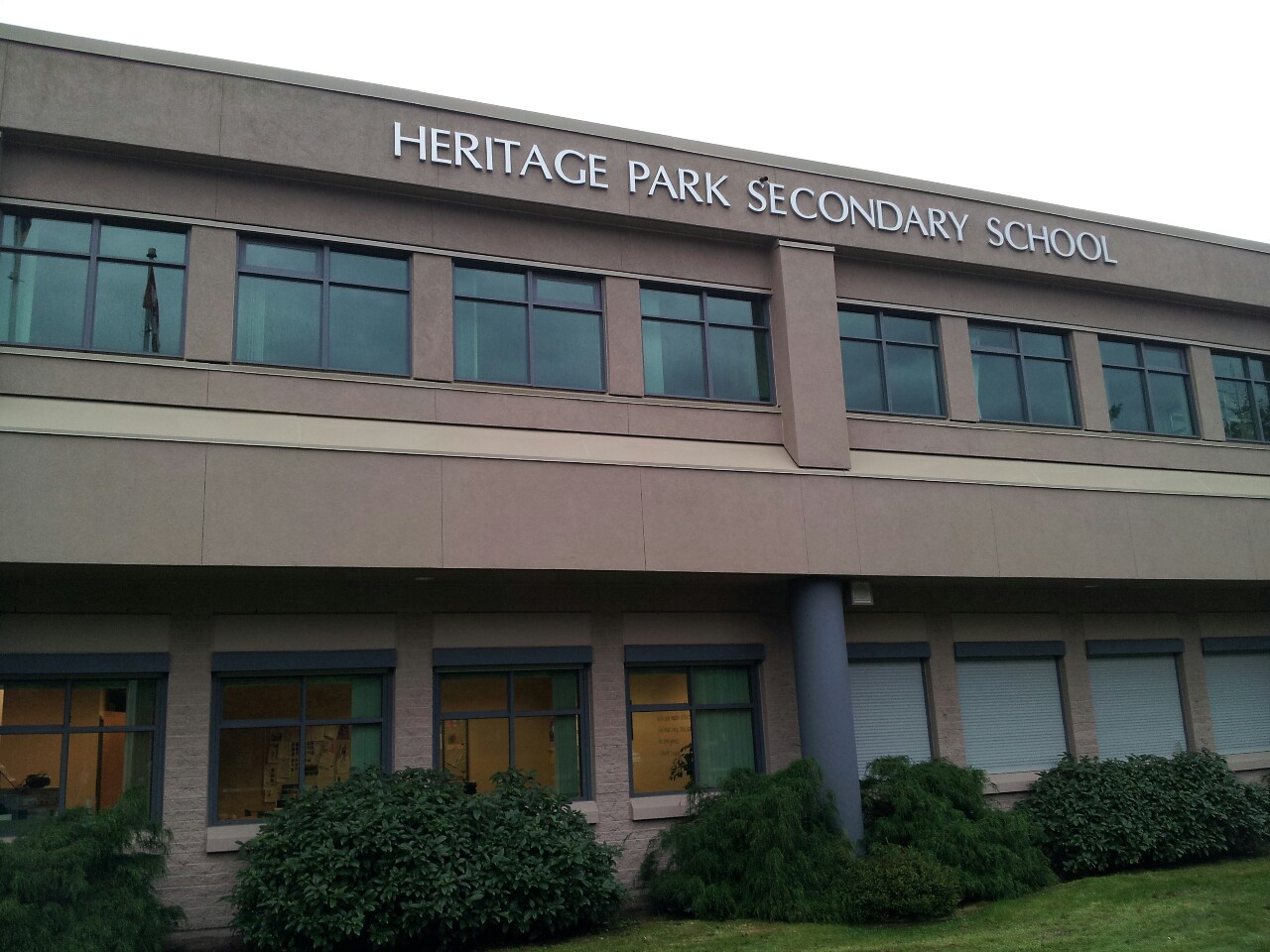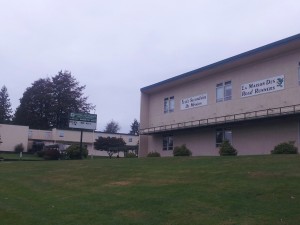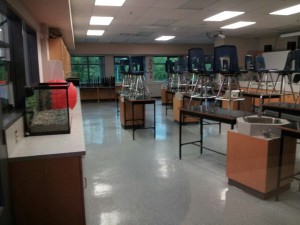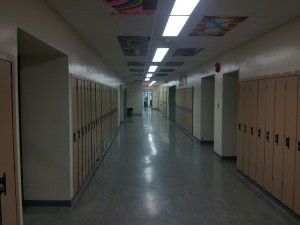
By Michael Scoular (The Cascade) – Email
Print Edition: October 22, 2014

With a recent announcement that the Mission public school system will be undergoing critical reconfiguration, combining its three secondary schools while simultaneously splitting off grades to form the district’s first middle schools, students — as intended beneficiaries — are about to experience some disorienting change.
“[In the district] we have about 1200 students from Grade 10 to 12, so when you spread them into three high schools, the course selection diminishes,” says chair of the school board Edie Heinrichs. All three upper-grade schools (Hatzic, Heritage Park, and Mission Secondary) currently enroll students from Grades 7 to 12, which is not, the school board decided, the best use of space. Mission Secondary will be the site for all students from 10 to 12, and Heritage Park and Hatzic will become middle schools for Grades 7 to 9.
Developments over the past few years have skewed negative: enrollment projections for the region suggest a continuing decline, which, combined with the split grades and wide age range, has made for a combination of course cutbacks and unhappy parents. (Some have complained about the influence of senior students on children as young as 12 within the same school; meanwhile, the surrounding larger districts mostly use the middle school model.)
Jules Bouwers is a second-year UFV student studying kinesiology, and saw options diminish as she moved toward graduation. “There weren’t a lot of options for your timetable,” she says. During her time at HPSS, Bouwers saw the film and television program eliminated, drama performances decline, and the lab assistant position at the school cut, which made practical experiments in biology and chemistry classes almost non-existent.
Emma Bisset, a Grade 12 student at HPSS, is experiencing the same in her last year before university. “The metalwork program’s been cut from our school, [and then] there’s not enough students for classes … I was supposed to be in social justice, but that one got cut. I was looking into AP history, but again, got cut.”
Heinrichs says that by combining Grades 10 to 12, class numbers will be adequate to offer a broader range of subjects, and work can be started to regain lost electives and programs. And teachers within the schools who were being fit into different roles as course offerings were reduced should benefit as well. “Sometimes we were having teachers in front of classes and that wasn’t their specialty,” she says. “But now we’ll be able to put English major teachers in front of English classes, biology in front of biology.”
Extracurriculars, including sports teams, have been affected as well. Hailey Johnston, now at UFV, recalls not much going right with the school’s volleyball team. “I [was playing] at a fairly high level, [including] Team BC, but on my high school team we had players who just started or were very new at the sport,” she says. “In Grade 11, I had to play on the senior guys’ team because we didn’t have enough girls who wanted to play.”
Heinrichs says under the new system the single high school should be able to form both A- and B-level sports teams for students.

The evident positive change expected for Mission high school students is also accompanied by a major question: Mission Secondary, the only building large enough to hold all Grade 10 to 12 students in the district, is also one of the oldest. Heritage Park was built in 1996 through a partnership between UFV (which occupies a part of the building and does not expect any changes as a result of this reconfiguration), the Clarke Foundation (whose theatre, housed inside, is used by the high school and the community for plays and concerts), and the municipal and provincial governments. Like the university’s Abbotsford campus, it shares design principles only a few steps below the lofty architecture of the more-recently opened Chilliwack campus at Canada Education Park: high ceilings, large windows, rounded spaces, and a colour palette deliberately far from concrete.
Mission Secondary is the only building that could have made the 10 to 12 split possible, but is dated (1952) in design and is particularly unpopular among Heritage students who will be moving to the larger building. In a small survey of Grade 8 and 9 students, the most common response expressed a desire to stay in a smaller community where the space is familiar, and where people, as Bisset says, “have the same goals, the same ambitions.”
Alyssa (Grade 9) said, “I know that looks aren’t everything, but still … [it] would be nice to have it look more inviting.” The school’s less-powerful lighting in hallways and locker-lined halls project a different image than Heritage’s compact organization, and will be an adjustment for students from Heritage and Hatzic arriving from different communities, whether from Mission’s rural areas, or the suburbs that neighbour Heritage Park.
The layout of a school can have an enormous impact on students, as Bouwers remembers from her time at Heritage.
“What I found going through school is because this is a newer building with newer equipment, I felt like the students did a lot better here — I really think it had to do with the environment that was put in Heritage, as ‘a very prestigious school,’” she says.
Heinrichs says that $1.5 million in upgrades will be applied to MSS, in particular to replicate the culinary arts kitchen at Heritage and to update the facility’s neglected wood and metal shops. But staying at MSS is not the ideal long-term situation.
A new building is desired, but provincial priorities for new schools are far from a sure thing. The Langley Advance reports that newly constructed elementary schools in their district are so over-capacity, additional portables were required before the schools opened, and yet for this year there will be no additional funding for new schools.
Mission school board vice-chair Jim Taylor says this plan had to move forward even without the promise of a better school building.
“I don’t see that coming,” he says. “What I do know is if we move to Heritage and put portables in, the government bases new schools on any empty spaces within your system, so the government looks at Mission and they’ll see Heritage as a high school with fourteen portables, they see Mission as a district with a full Heritage and a half-empty Mission Secondary School, and they simply would refuse to fund anything.

“If we move it to Mission, there is a faint hope. It will be replaced before any other building in our district is replaced. And if it’s full, there’s a better chance it will be replaced.”
Heinrichs and Taylor are also both currently running for re-election as school trustees; the municipal election goes to vote November 15 with 11 candidates for four positions.
“We’ve had people say ‘What the hell are you doing, doing this reconfiguration just before the election — are you stupid?’ but no, we would rather do this during an election, because the election is a perfect time for the public to say whether they support it or not,” Taylor says. “The public should have a say in it, but we don’t hold a referendum every time we make a change, and so this to me works perfectly.”
Jim Pearce and Beth-Anne Cullen, the appointed principal and vice-principal for next year’s high school, are hosting monthly public forums for parents and students regarding course priorities and plans for the new school. The first takes place October 29, 7 p.m. at MSS.
An all-candidates meeting for school trustee elections will be held at the Clarke Theatre October 22, 7 p.m.
With files from Mhairi MacDonald.

